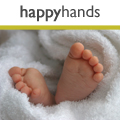Baby Clinic
Breastfeeding
Breastfeeding Guide: getting started
Breastfeeding is a great start for you and your baby. Nutritionally it is the natural balance your baby needs in the earliest month of life, it also contains antibodies that will help strengthen his immune system.
For you it not only helps stimulate the body’s own post-birth recovery mechanisms but it also does a great job of burning up calories!
Whether you have small or large breasts you should be able to feed your baby happily and healthily for the months to come.
Breastfeeding – where to start
You should have had some guidance from your midwife or antenatal classes on how to breastfeed, and after the birth hopefully there should some reassuring guidance on hand from the midwifes who do your home visits, and your health visitor, to get you started.
The good news is that your baby is not reliant on an instantly on-tap supply of milk for the first few hours. Instead, latching on to your breasts, whilst providing a little food, is also about you both getting to know each other and sharing an important closeness.
- What you need. When you first feed your baby you will probably still just be in a gown at home or hospital. After that, wear a feeding bra (one with an easy release clasp to let one cup drop down at a time), and a top that’s easy to lift up comfortably and discreetly. You might also want to buy breast pads for days when your boobs get a little leaky. Feeding can take a while – at first because you are both getting used to doing it, and later because a decent feed can take at least 20 minutes – so sit somewhere that your back will be well supported, with plenty of cushions to hand so you can arrange them ad hoc to get your arms well supported. Also bear in mind that between breastmilk occasionally leaking and your baby bringing back up some of his half-drunk milk, you need to wear easy, washable clothes. The early days of motherhood is no time for linen suits!
- Latching on. Getting your baby to fix onto your breast in the right way is important to ensure that the milk is drawn out and to avoid you suffering from sore nipples. Sit somewhere you can be comfortable and use cushions to support your arm so that you can cradle your baby with his mouth able to reach your breast without stretching. Your baby’s sense of smell will make him naturally seek out your nipple but otherwise, brush your nipple against his top lip to encourage him. Aim your nipple at the roof of his mouth to ensure enough of the breast is latched. Your nipple should be completely inside his mouth, so that his tongue can move against the lower part of the areola to stimulate milk production. If he is properly latched on his chin should be touching your breast, you might even be able to feel the milk flow, and you will see his whole jaw moving as he sucks.
- Colostrum. In the first two or three days, the milk you produce is much thicker. It is full of wonderful nutrients for your baby and because it does not flow as quickly or in as much volume as the regular milk that will follow, it is a little easier for you both to settle into feeding with.
- When the milk ‘comes in’. Prepare yourself for a whole new experience on the day that your regular breastmilk arrives. Now your breasts will get much larger as the time for a feed approaches and your baby has to re-learn latching on because suddenly for him it’s like trying to catch hold of the tip of a big balloon. The transition may go smoothly, but more likely you will find that you both get tired and frustrated as the morning feed comes and goes without success, then the lunchtime one, and eventually it all clicks by teatime. Try to relax and get someone else to sort your meals and drinks so that you and your baby can just concentrate on resting and trying to get this new experience right.
- Burping your baby. There is no need to slap your baby on the back to get a loud burp out of him. Instead, after a feed, gently bring your baby to your shoulder, rub his back a little and see if that settles him. If he falls asleep while feeding, simply unlatch him by hooking your little finger under his tongue, then, if he looks comfortable, let him sleep on your shoulder for a few minutes to bring up any wind, before laying him down on his back.
- Regular feeding. In the early days your baby’s sleeping and feeding patterns will be very irregular. It is best to simply feed on demand at this time – it’s a huge learning curve for both of you. You will probably have to feed every two to three hours in the early weeks, but these feeds may be quite short. As the weeks go on, your baby will naturally feed for longer. Offer the breasts in turn to balance out feeding. You can offer both breasts to a very hungry baby, but make sure you have really drained one before starting the other. This is because the first rush of milk (the foremilk) is to quench thirst but then it is followed by the more nutritious hindmilk.
- Keeping your breasts comfortable. Your breasts will make as much milk as is demanded. If your baby had lots of feeds one day, the next the supply will increase. Until your baby is in a more settled pattern, you might find there are times when he sleeps longer and your breasts fill with milk. If this is the case, ease the pressure by gently massaging your breasts, or even try expressing a little breastmilk. Do not express too much at this time, otherwise your breasts will generate even larger amounts. If your baby’s feeding drops off one day and increases the next, just try to even out the feeds a little. But don’t worry too much, breasts are incredibly efficient at keeping young feeders happy.
Related Articles
A Great Day Out at The Baby Show, Excel
Preparing Premature Infants for School
BornFree – the natural approach to bottles
Bottle-feeding: keeping it natural
Buyer's guide to feeding bottles
Buyer's guide to feeding teats
BabyBjörn venture into drinking cups
Related Products
Weleda, Stretch Mark Massage Oil
Related Forum Topics
Forums: Baby
Reproaching a stranger for bad behaviour to their child.
Patricia6
Re: Second hand/ nearly new baby shops??
Clare, Mother of 2, London
Re: fussy eater
Clare, Mother of 2, London
Re: does any1 know anything that will help me get my baby into a better sleep routen?
clarejayne, Mother of 1, Nottinghamshire
Re: Try this perfect family lunch in Hyde Park
Clare, Mother of 2, London
Have Your Say
Be the first person to comment on this article, just post a comment below.






In order to post a comment you need to be a member. Join Now | Sign in